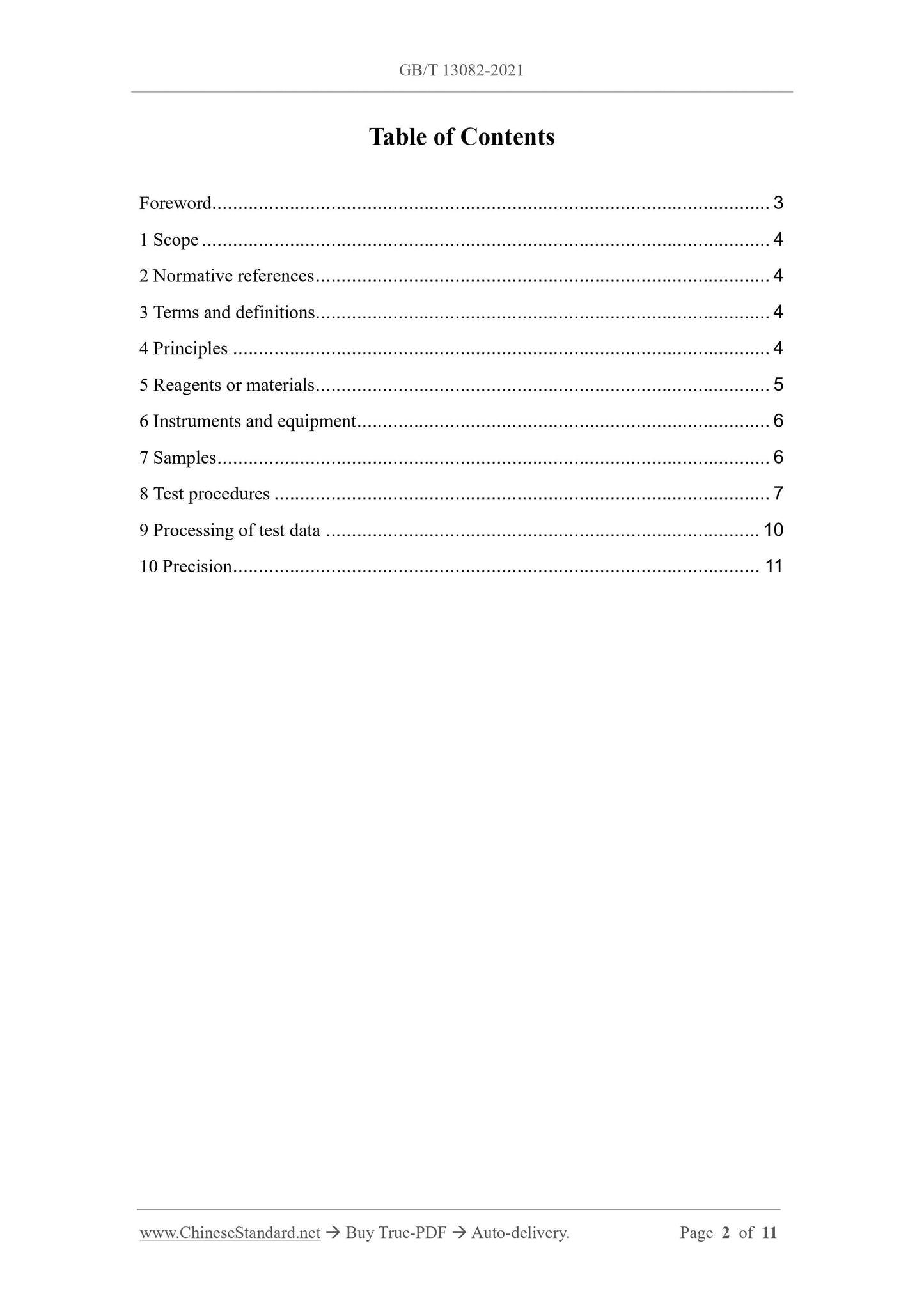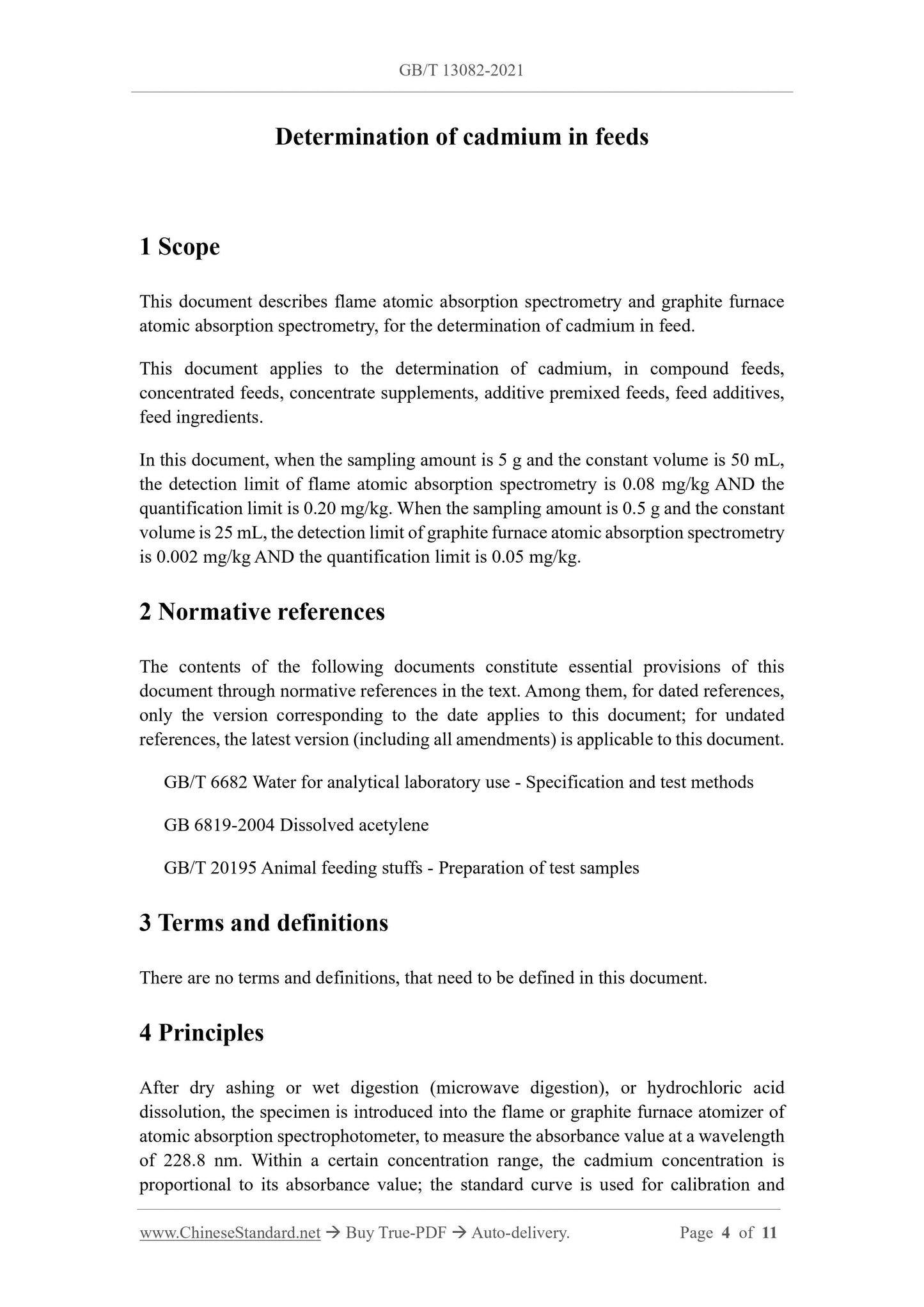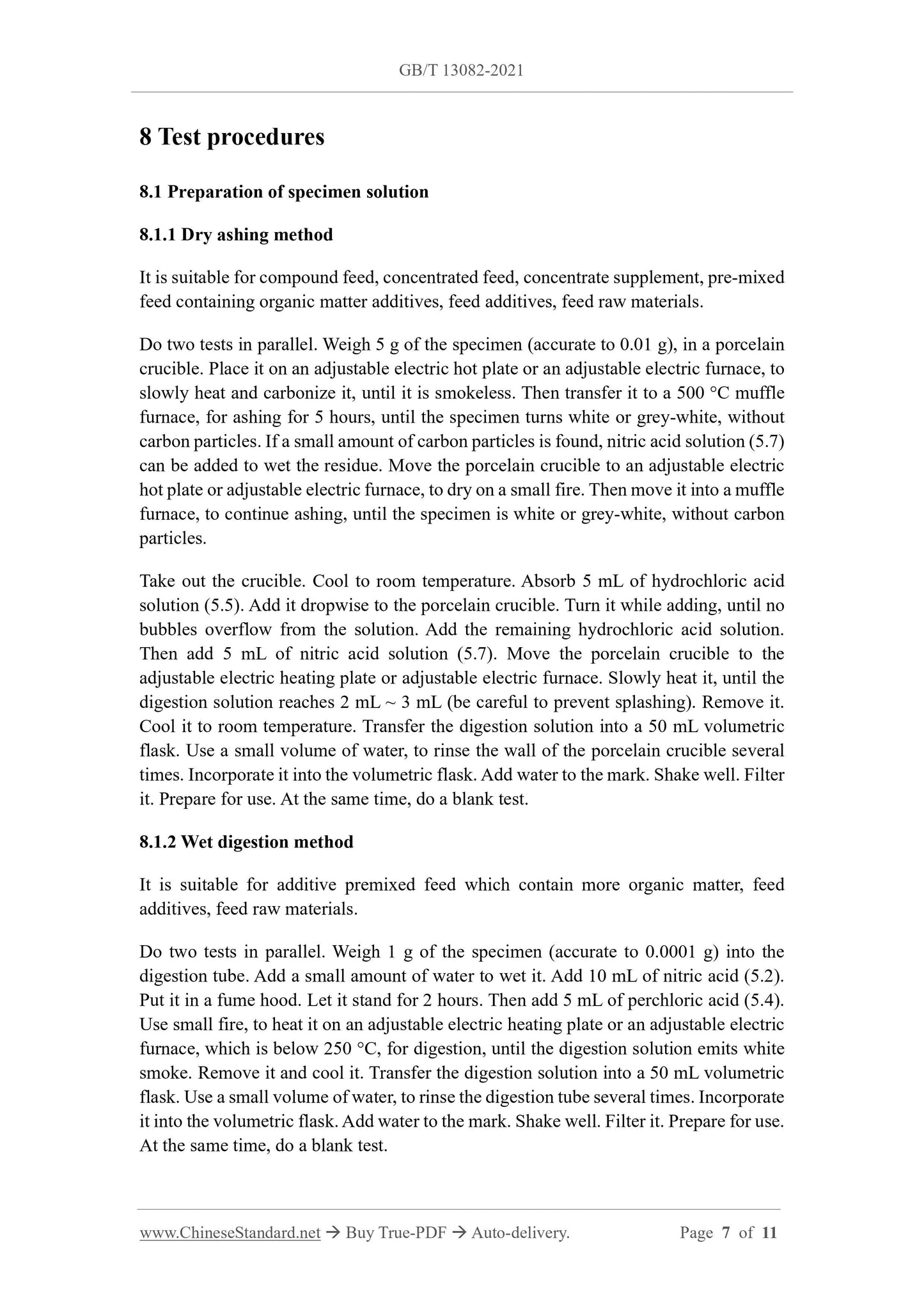1
/
of
5
www.ChineseStandard.us -- Field Test Asia Pte. Ltd.
GB/T 13082-2021 English PDF (GB/T13082-2021)
GB/T 13082-2021 English PDF (GB/T13082-2021)
Regular price
$170.00
Regular price
Sale price
$170.00
Unit price
/
per
Shipping calculated at checkout.
Couldn't load pickup availability
GB/T 13082-2021: Determination of cadmium in feeds
Delivery: 9 seconds. Download (and Email) true-PDF + Invoice.Get Quotation: Click GB/T 13082-2021 (Self-service in 1-minute)
Newer / historical versions: GB/T 13082-2021
Preview True-PDF
Scope
This document describes flame atomic absorption spectrometry and graphite furnaceatomic absorption spectrometry, for the determination of cadmium in feed.
This document applies to the determination of cadmium, in compound feeds,
concentrated feeds, concentrate supplements, additive premixed feeds, feed additives,
feed ingredients.
In this document, when the sampling amount is 5 g and the constant volume is 50 mL,
the detection limit of flame atomic absorption spectrometry is 0.08 mg/kg AND the
quantification limit is 0.20 mg/kg. When the sampling amount is 0.5 g and the constant
volume is 25 mL, the detection limit of graphite furnace atomic absorption spectrometry
is 0.002 mg/kg AND the quantification limit is 0.05 mg/kg.
Basic Data
| Standard ID | GB/T 13082-2021 (GB/T13082-2021) |
| Description (Translated English) | Determination of cadmium in feeds |
| Sector / Industry | National Standard (Recommended) |
| Classification of Chinese Standard | B46 |
| Word Count Estimation | 9,974 |
| Issuing agency(ies) | State Administration for Market Regulation, China National Standardization Administration |
Share









